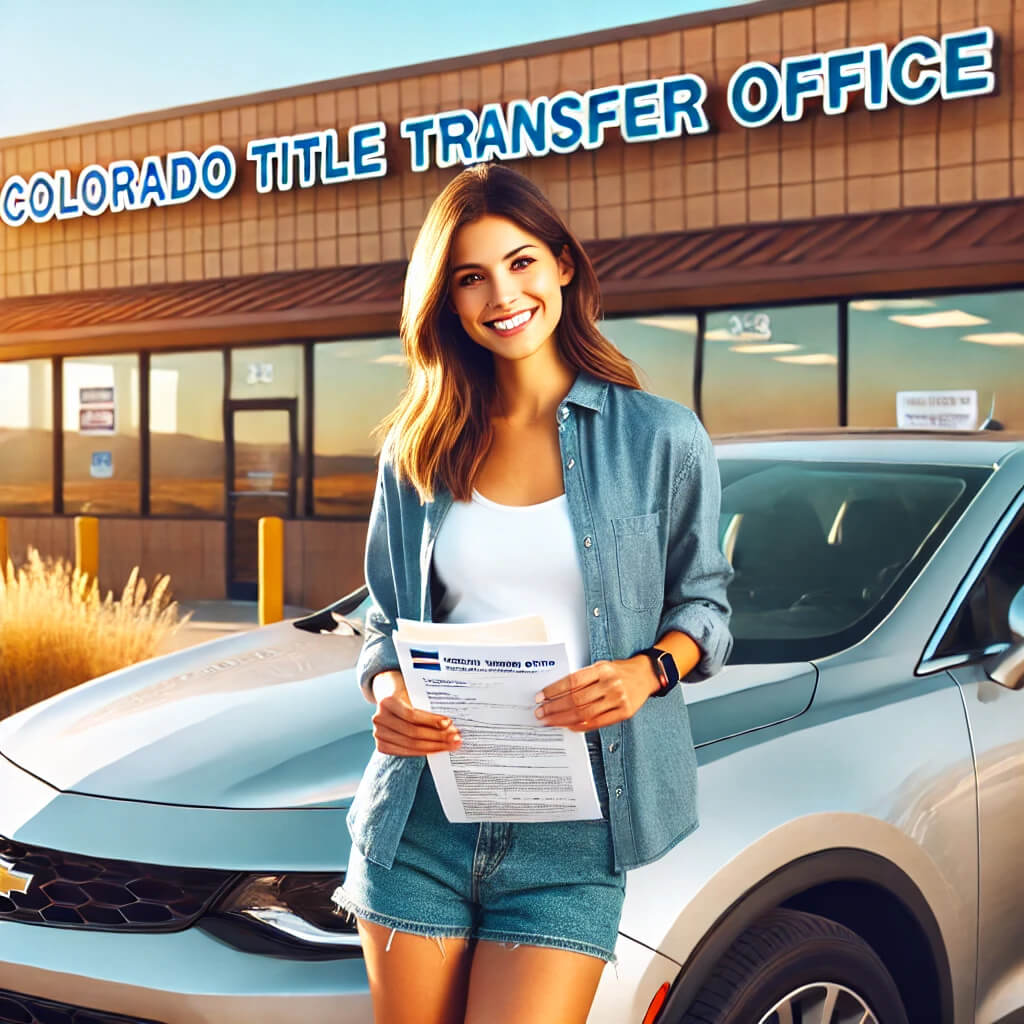1. Introduction: Understanding the Importance of Title Transfer in North Dakota
Transferring a vehicle title in North Dakota is an essential step whenever ownership of a vehicle changes. Whether you’re buying or selling a car, truck, or any other vehicle, the title transfer ensures that the legal ownership is properly recorded. This process is crucial not only for legal reasons but also for ensuring that the vehicle is registered under the correct name and that taxes and fees are appropriately paid. In this guide, we’ll take you through everything you need to know about title transfer in North Dakota—from the necessary documents to the process itself and everything in between.
2. Legal Requirements for Title Transfer in North Dakota
In North Dakota, the process of title transfer is governed by state laws, and there are several legal requirements you must meet to complete the transaction. These laws help protect both buyers and sellers by ensuring that ownership is properly documented and that all necessary fees and taxes are paid.
-
Who Can Transfer a Title?: Only the registered owner of the vehicle can legally transfer the title. In the case of a sale or donation, both parties (buyer and seller) must sign the title, and certain forms may need to be notarized.
-
State Regulations: North Dakota has specific regulations regarding title transfers, including rules for when a vehicle has been damaged or salvaged, and requirements for dealers versus private parties.
3. Key Documents Required for Title Transfer
Several key documents are necessary to successfully transfer a vehicle title in North Dakota. Having these documents in order will ensure a smooth and hassle-free transaction.
-
Vehicle Title: The most important document needed for a title transfer is the vehicle’s title itself. The seller must provide the original title, signed in the appropriate sections.
-
Bill of Sale: A bill of sale acts as a receipt for the transaction and provides proof of the sale. It includes details about the vehicle, the buyer, and the seller.
-
Proof of Identity and Residency: Both the buyer and the seller must provide proof of identity and, in some cases, proof of residency in North Dakota. This can be a valid driver’s license or state ID.
-
Odometer Disclosure Statement: For vehicles less than 10 years old, an odometer disclosure statement is required to verify the mileage on the vehicle at the time of sale.
4. Steps Involved in Title Transfer in North Dakota
Transferring a vehicle title in North Dakota is a straightforward process, but it requires attention to detail. Here’s a step-by-step breakdown:
-
Sign the Title: The seller must sign the title, and the buyer must also sign in the appropriate section.
-
Complete the Odometer Disclosure: If applicable, both parties must fill out the odometer disclosure statement to record the vehicle’s mileage.
-
Submit Documents to the DMV: Once signed, the buyer should submit the title, bill of sale, and other necessary documents to the North Dakota DMV.
-
Pay Fees: Pay the required title transfer fees and any applicable sales tax.
-
Receive New Title: After the DMV processes the transfer, the new owner will receive a new title in their name.
5. How to Transfer a Title Between Private Parties
When transferring a vehicle title between private individuals, the process is largely the same, but there are a few additional steps to keep in mind:
-
No Dealer Involvement: Since there’s no dealership, the buyer and seller will need to complete all the paperwork themselves.
-
Notarization: In some cases, signatures may need to be notarized. This ensures the signatures are legitimate and helps prevent fraud.
-
Filing with the DMV: Private parties must file the completed title transfer paperwork with the DMV and pay the required fees.
6. Title Transfer for Dealers and Retailers
Dealerships play a key role in the title transfer process, and they have their own set of responsibilities:
-
Dealer Transfers: When a vehicle is purchased from a dealership, the dealer typically handles the title transfer process. The dealer will ensure that the buyer receives a properly signed title and will handle the filing with the DMV.
-
Documentation: Dealers must provide all required documentation, including proof of the vehicle’s origin and condition, to facilitate a seamless transfer.
7. Title Transfer for Out-of-State Vehicles
If you’re transferring the title for a vehicle that was originally purchased out of state, there are a few additional considerations:
-
Out-of-State Titles: The buyer will need to submit the original title from the previous state along with the required forms for transferring it to North Dakota.
-
Inspection Requirements: Some vehicles may require an inspection to verify their identity and condition before a title can be transferred.
-
Additional Fees: Be aware of additional taxes or fees that may apply to out-of-state vehicles.
8. Transfer of Title for Inherited Vehicles
Transferring the title of a vehicle that was inherited from a deceased relative involves additional steps, including:
-
Death Certificate: The inheritor must provide a death certificate to prove their relationship to the deceased.
-
Affidavit of Inheritance: In some cases, an affidavit of inheritance may be required to confirm the rightful owner.
-
Other Documentation: Depending on the circumstances, additional documents such as a probate court order may be necessary.
9. Transferring a Title for a Leased Vehicle
If you’re transferring the title of a leased vehicle, the process differs slightly:
-
Buyout Option: If you want to purchase the leased vehicle and transfer the title, you’ll need to complete the buyout process with the leasing company.
-
Lease Agreement: Ensure you have all necessary documentation from the leasing company, including the final payment receipt and the buyout price.
10. North Dakota Title Transfer Fees and Costs
There are several fees associated with title transfers in North Dakota. Understanding these costs beforehand can help you budget for the process:
-
Title Transfer Fee: A nominal fee for transferring the title.
-
Sales Tax: Depending on the purchase price of the vehicle, sales tax will apply.
-
Registration Fees: Vehicle registration fees must be paid to ensure that the vehicle is legally allowed to operate on North Dakota roads.
11. How to Handle Title Transfer When There’s a Lien on the Vehicle
If the vehicle you’re buying or selling has a lien, additional steps are required:
-
Clearing the Lien: The lien must be paid off before the title can be transferred. Once cleared, the lienholder will release their claim on the vehicle.
-
Lienholder’s Involvement: In some cases, the lienholder must be involved in the title transfer process to verify that the lien has been settled.
12. Common Title Transfer Mistakes to Avoid
While transferring a title in North Dakota is relatively simple, there are common mistakes that can delay the process:
-
Missing Signatures: Ensure that both the buyer and seller sign in the correct places.
-
Incorrect Information: Double-check that all vehicle details, including the VIN, are accurately recorded.
-
Failure to Notarize: In certain cases, notarization is required, so don’t skip this step.
13. How to Transfer a Title When the Owner is Out of State
If the seller is out of state, you may still be able to transfer the title by:
-
Mailing the Documents: The seller can mail the signed title and necessary documents to the buyer, who can then submit them to the North Dakota DMV.
-
Remote Notarization: Some states allow notarization via video call, so check to see if this is an option.
14. Understanding North Dakota Title Brands and Their Impact on Transfer
North Dakota issues specific title brands that may affect the transfer process:
-
Salvage Title: Vehicles that have been severely damaged and repaired may carry a salvage title, which can impact resale value.
-
Rebuilt Title: A vehicle with a rebuilt title has been repaired and inspected to ensure it’s roadworthy.
-
Flood Title: Vehicles that have been involved in flooding may have a flood title, which should be disclosed during the transfer.
15. What to Do If You Lose Your Title
Losing your vehicle title can be frustrating, but it’s manageable:
-
Apply for a Duplicate Title: You can apply for a duplicate title through the North Dakota DMV by providing proof of identity and paying a fee.
-
Required Documentation: Be prepared to submit a form requesting a duplicate title, along with other supporting documents.
16. Registering Your Vehicle After Title Transfer
Once the title is successfully transferred, you’ll need to register the vehicle in your name:
-
Registration Process: Complete the vehicle registration process at the DMV, where you’ll receive new plates and registration stickers.
-
Proof of Insurance: Ensure you have valid proof of insurance before completing registration.
17. Special Considerations for Title Transfers of RVs, Boats, and Motorcycles
Transferring titles for recreational vehicles (RVs), boats, and motorcycles involves unique steps:
-
RVs: An RV title transfer may require an inspection, especially for out-of-state vehicles.
-
Boats and Motorcycles: Boat and motorcycle title transfers often require additional paperwork related to vehicle identification and registration.
18. Tracking the Progress of Your Title Transfer
After submitting your title transfer application, you can track its progress:
-
Processing Time: The DMV typically processes title transfers within 10-15 business days.
-
Status Updates: You can contact the DMV or check their online portal for updates on the status of your title transfer.
19. What Happens if You Don’t Transfer the Title Within the Required Timeframe?
Failing to transfer the title within the required timeframe can result in penalties:
-
Late Fees: There may be additional fees if you don’t complete the title transfer on time.
-
Legal Issues: Delays can lead to complications with vehicle registration and ownership.
20. FAQs: Title Transfer in North Dakota
Q1: What is the timeframe for completing a title transfer in North Dakota?
A1: You should complete the title transfer within 30 days of the sale.
Q2: Do I need to pay sales tax when transferring a title?
A2: Yes, sales tax is typically due based on the purchase price of the vehicle.
Q3: Can I transfer a title if the car is financed?
A3: You can transfer the title once the lien is paid off.
Q4: What should I do if there’s a mistake on my title?
A4: Contact the DMV to correct the error.
Q5: How do I handle title transfers for vehicles that have been salvaged?
A5: Vehicles with a salvage title will require additional inspection and paperwork.
Q6: Can I transfer a title for a car that is not yet registered in my name?
A6: Yes, but the registration must be completed simultaneously with the title transfer.
Conclusion
Transferring a title in North Dakota may seem like a daunting task, but with the right knowledge and preparation, it’s a manageable and straightforward process. By understanding the necessary documents, fees, and procedures, you can ensure a smooth and hassle-free title transfer experience. Whether you’re buying, selling, or inheriting a vehicle, this guide has equipped you with the tools you need to complete the process confidently.











